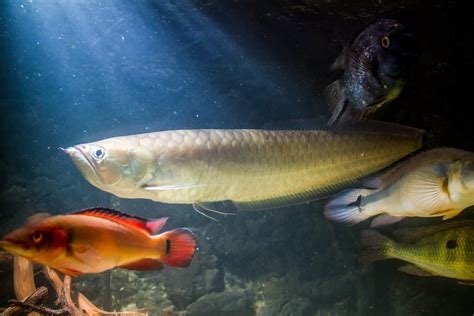Asian vs. South American Arowana: Key Differences Explained
Asian vs. South American Arowana: Key Differences Explained
The Arowana, also known as the dragonfish, is a fascinating member of the Osteoglossidae family. These prehistoric-looking fish have captured the hearts of aquarium enthusiasts worldwide. However, not all Arowanas are created equal. In this comprehensive guide, we’ll explore the key differences between Asian vs south american arowana species, providing valuable insights for both novice and experienced fish keepers.
Key Takeaways:
- Asian and South American Arowanas differ in appearance, habitat, behavior, and care requirements.
- Asian Arowanas are generally more colorful and expensive, while South American species are larger.
- Conservation efforts are crucial for protecting wild Arowana populations.
- Proper aquarium setup and care are essential for keeping Arowanas healthy in captivity.
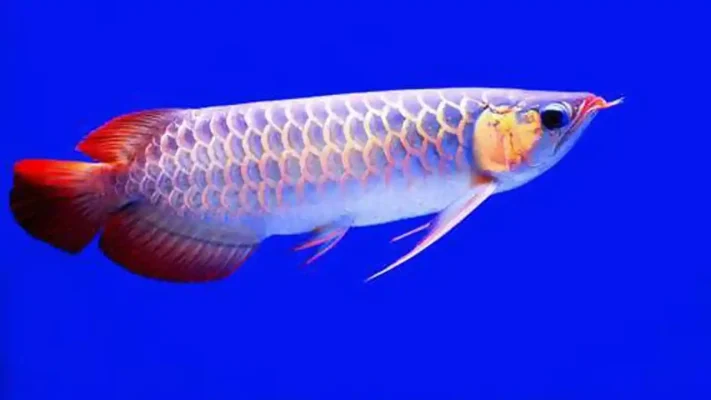
Asian vs South American Arowana: Physical Appearance and Size
Body shape and length differences
Asian and South American Arowanas exhibit distinct physical characteristics that set them apart.
Asian Arowana characteristics include:
- Sleeker, more streamlined body shape
- Average length of 60-90 cm (24-35 inches)
- More compact appearance
South American Arowana traits include:
- Longer, more elongated body
- Can reach lengths of up to 120 cm (47 inches)
- Generally larger overall size
Distinctive color variations
One of the most striking differences between these two Arowana species is their coloration.
Asian Arowana color morphs include:
- Golden Arowana: Vibrant gold scales
- Red Arowana: Deep red coloration
- Green Arowana: Emerald green hues
- Silver Arowana: Metallic silver appearance
South American Arowana species are typically less colorful:
- Silver Arowana: Most common variety
- Black Arowana: Dark coloration with a bluish tint
Scale patterns and textures
Arowana scale patterns vary between Asian and South American species:
- Asian Arowanas: Large, pronounced scales with a metallic sheen
- South American Arowanas: Smaller, less prominent scales with a matte finish.
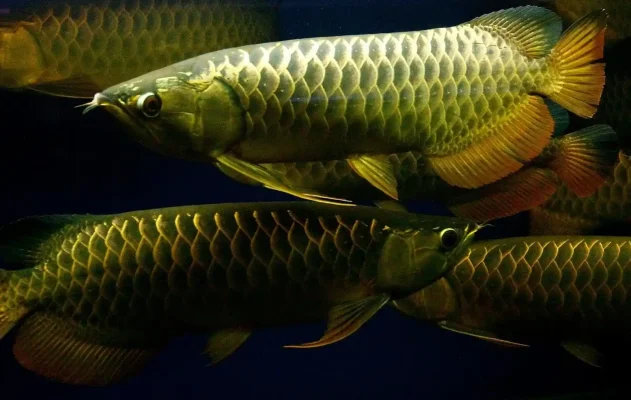
Asian vs South American Arowana: Fin size and shape comparisons
Arowana fin structure differences:
- Asian Arowanas: Shorter, more rounded fins
- South American Arowanas: Longer, more flowing fins, especially the anal and dorsal fins
| Feature | Asian Arowana | South American Arowana |
|---|---|---|
| Body Shape | Sleek, streamlined | Elongated |
| Average Length | 60-90 cm | Up to 120 cm |
| Coloration | Vibrant (gold, red, green) | Typically silver or black |
| Scales | Large, metallic | Smaller, matte |
| Fins | Shorter, rounded | Longer, flowing |
Natural Habitat and Distribution
Geographic origins of Asian Arowana
Asian river systems where Arowanas are found include:
- Mekong River
- Kapuas River
- Mahakam River
These arowana natural habitats are characterized by:
- Slow-moving, freshwater environments
- Dense vegetation
- High humidity

South American Arowana’s native environments
Amazon basin Arowana species inhabit:
- Amazon River and its tributaries
- Orinoco River basin
- Essequibo River
These habitats feature:
- Flooded forests
- Swamps
- Slow-moving rivers and streams
Water conditions in their natural habitats
Arowana water requirements differ based on their origin:
Asian Arowanas:
- pH: 6.0-7.0
- Temperature: 24-30°C (75-86°F)
- Hardness: Soft to moderately hard
South American Arowanas:
- pH: 6.5-7.5
- Temperature: 24-28°C (75-82°F)
- Hardness: Soft to medium
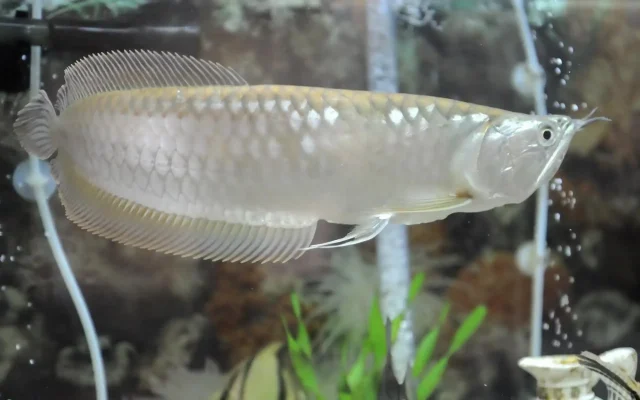
Asian vs south american arowana: Impact of habitat on behavior and adaptations
The distinct environments have led to various adaptations:
- Asian Arowanas: More aggressive and territorial due to limited space in their natural habitats
- South American Arowanas: Generally more peaceful, adapted to larger river systems
Behavior and Temperament
Aggression levels and territorial tendencies
Arowana territorial nature varies between species:
- Asian Arowanas: Highly territorial and aggressive, especially in smaller spaces
- South American Arowanas: Less aggressive, but still territorial
Social behavior in the wild and captivity
Arowana social behavior:
- Asian Arowanas: Solitary in the wild, challenging to keep with other fish in captivity
- South American Arowanas: More tolerant of conspecifics, can be kept in groups in large aquariums
Hunting and feeding habits
Arowana feeding habits are similar across species:
- Surface feeders
- Carnivorous diet
- Prey on insects, small fish, and crustaceans
Arowana hunting techniques include:
- Leaping out of the water to catch prey
- Ambush predation
Jumping abilities and surface-dwelling nature

Both Asian and South American Arowanas are known for their impressive arowana jumping ability:
- Can leap up to 2 meters (6 feet) out of the water
- Surface-dwelling nature makes them prone to jumping in captivity
“The Arowana’s ability to leap out of the water is not just for show – it’s a crucial hunting technique that has evolved over millions of years.” – Dr. Emily Chen, Ichthyologist
Breeding and Reproduction
Mating rituals and courtship behaviors
Arowana breeding techniques differ between Asian and South American species:
Asian Arowanas:
- Elaborate courtship displays
- Males may become more vibrant during breeding season
South American Arowanas:
- Less complex mating rituals
- Pair bonding observed in some species
Egg-laying vs. mouthbrooding techniques
One of the most significant differences in arowana breeding techniques:
- Mouthbrooding in Asian Arowana: Males incubate eggs in their mouths
- Egg-laying in South American Arowana: Females lay eggs on submerged vegetation
Fry development and parental care
Arowana fry care varies between species:
Asian Arowanas:
- Fry remain in the male’s mouth for 4-5 weeks
- Gradual release of fry once they can swim independently
South American Arowanas:
- Parents guard egg clutches
- Fry are free-swimming within a few days of hatching
Breeding challenges in captivity
Arowana breeding programs face several challenges:
- Difficulty in sexing Arowanas
- Large space requirements for successful breeding
- Specialized diets needed for breeding conditioning
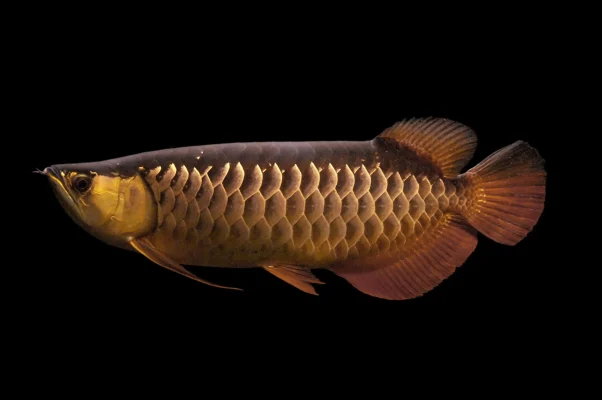
Conservation Status and Regulations
CITES classifications for Asian and South American species
Arowana conservation status varies:
- Asian Arowanas: Listed in CITES Appendix I (highly protected)
- South American Arowanas: Listed in CITES Appendix II (regulated trade)
Threats to wild populations
Major threats to arowana wildlife conservation:
- Habitat destruction
- Overfishing for the aquarium trade
- Pollution of natural waterways
Conservation efforts and breeding programs
Sustainable arowana farming initiatives:
- Captive breeding programs for Asian Arowanas
- Habitat restoration projects
- Public education and awareness campaigns
Legal restrictions on ownership and trade
Arowana legal ownership regulations:
- Asian Arowanas: Strict regulations, often requiring permits
- South American Arowanas: Less restricted, but still subject to CITES regulations
Aquarium Care and Requirements
Tank size and setup recommendations
Arowana aquarium setup essentials:
- Minimum tank size: 250 gallons (950 liters) for a single adult
- Strong filtration system
- Secure lid to prevent jumping
Water parameters and filtration needs
Arowana water parameters for optimal health:
- Temperature: 24-30°C (75-86°F)
- pH: 6.5-7.5
- Hardness: Soft to medium
- Arowana filtration needs: High-quality canister filters or sump systems
Diet and feeding schedules
Arowana diet in captivity:
- Live food for Arowana: Insects, small fish, crustaceans
- High-quality pellets and frozen foods
- Feeding frequency: 2-3 times per week for adults
Common health issues and prevention
Arowana health issues to watch for:
- Dropsy
- Fin rot
- Parasitic infections
Prevention:
- Regular water changes
- Proper nutrition
- Stress reduction
“Providing a spacious, well-maintained aquarium is crucial for the health and longevity of Arowanas in captivity.” – Dr. Michael Roberts, Aquatic Veterinarian
- Q: Which Arowana species is more suitable for beginners? A: South American Arowanas, particularly the Silver Arowana, are generally considered more suitable for beginners due to their hardier nature and less aggressive temperament.
- Q: How long do Arowanas typically live? A: With proper care, Arowanas can live up to 20-25 years in captivity, with some reports of individuals living even longer.
- Q: Can Asian and South American Arowanas be kept together? A: It is not recommended to keep Asian and South American Arowanas together due to differences in temperament and potential aggression.
- Q: Are Arowanas intelligent fish? A: Yes, Arowanas are considered highly intelligent fish. They can recognize their owners and learn feeding routines.
- Q: How often should I feed my Arowana? A: Adult Arowanas should be fed 2-3 times a week, while juveniles may require daily feeding.
- Q: Can Arowanas change color? A: Some Arowana species, particularly Asian varieties, can exhibit slight color changes due to factors such as age, diet, and environmental conditions.
- Q: Are Arowanas good luck symbols? A: In some Asian cultures, particularly Chinese, Arowanas are considered symbols of good luck and prosperity.
There you have it, folks! We’ve explored the fascinating world of Asian and South American Arowanas, uncovering their unique traits and differences. From their stunning appearances to their complex behaviors, these fish truly are a wonder of nature. Whether you’re considering adding an Arowana to your aquarium or simply appreciating their beauty from afar, understanding these differences is crucial. Remember, responsible ownership and conservation efforts are key to ensuring these magnificent creatures continue to thrive for generations to come. So, which Arowana species captured your imagination?
Let us know in the comments below!
Citations/References:
- U.S. Fish & Wildlife Service. (2021). CITES Species Database. https://www.fws.gov/international/cites/
- Fisheries and Oceans Canada. (2022). Arowana Species Profile. https://www.dfo-mpo.gc.ca/dpr-rmr/2021-22/drr-eng.html
- Australian Government Department of Agriculture, Water and the Environment. (2023). CITES-listed species. https://www.environment.gov.au/biodiversity/wildlife-trade/cites
- National University of Singapore. (2019). Asian Arowana Conservation. https://www.tandfonline.com/doi/full/10.1080/23308249.2019.1697641
- Froese, R. and D. Pauly. Editors. (2023). FishBase. World Wide Web electronic publication. www.fishbase.org
- IUCN Red List of Threatened Species. (2023). Scleropages formosus. https://www.iucnredlist.org/
- Convention on International Trade in Endangered Species of Wild Fauna and Flora (CITES) – www.cites.org
- FishBase – www.fishbase.org
- International Union for Conservation of Nature (IUCN) Red List – www.iucnredlist.org
- National Oceanic and Atmospheric Administration (NOAA) – www.noaa.gov
- World Wildlife Fund (WWF) – www.worldwildlife.org
- University of Florida IFAS Extension – www.ifas.ufl.edu
- National Geographic – www.nationalgeographic.com


 Deutsch
Deutsch